本文介绍了使用Service Catalog和OC命令部署OpenShift应用、部署基本概念和流程、扩展存储、清理OpenShift对象等。以Angular 6集成Spring Boot 2,Spring Security,JWT和CORS中的Spring Boot和Angular项目为例,详细讲解了S2I和Pipeline两种部署方式。
OKD版本3.11,Spring Boot项目源码heroes-api,Angular项目源码heroes-web。
初识OpenShift部署
Service Catalog
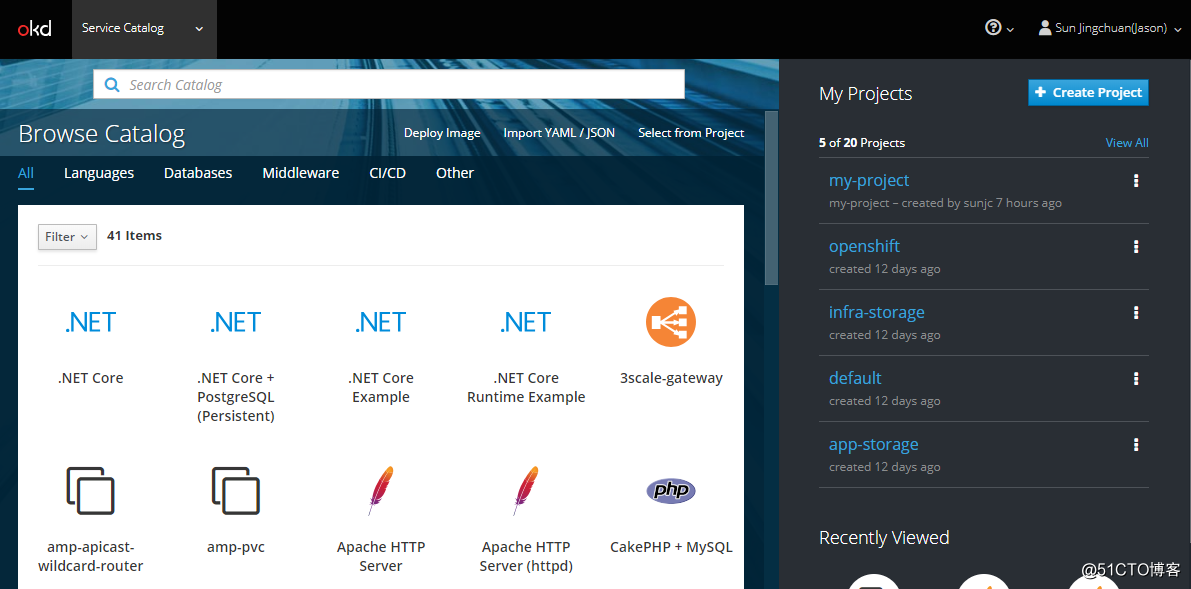
OpenShift初始安装中含有一些样例APP供大家学习使用。其中有Apache HTTP Server和Apache HTTP Server(httpd),这两者有什么区别?分别点击进入可以发现: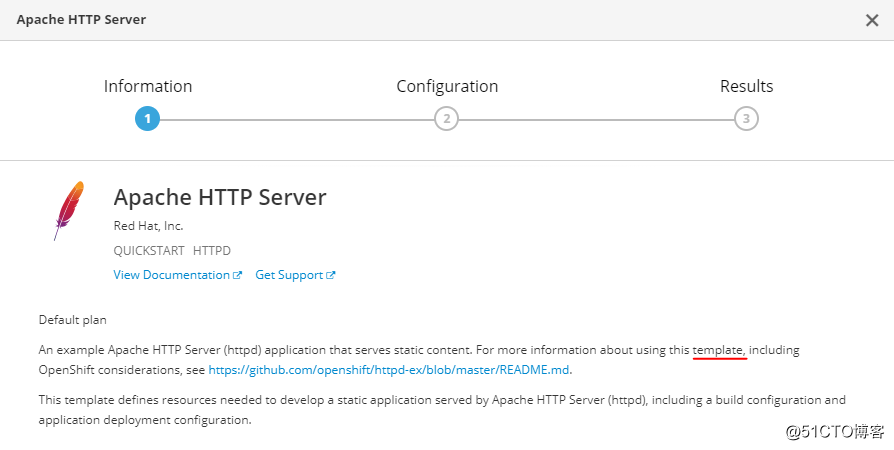
Apache HTTP Server使用template(template名字为httpd-example)部署方式。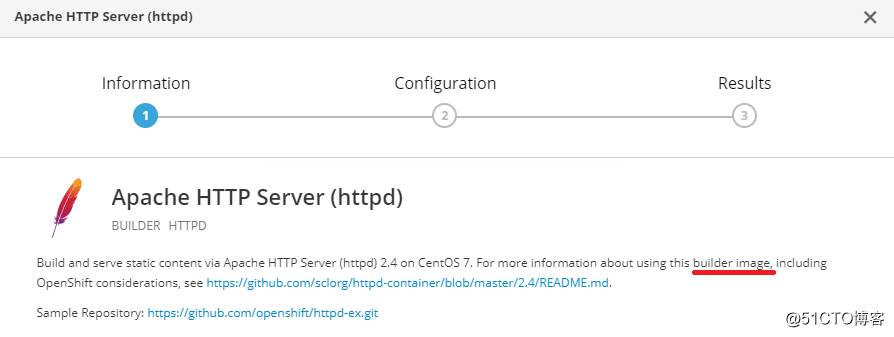
Apache HTTP Server(httpd)使用builder image(image stream名字为httpd)部署方式。
Service Catalog样例使用了template和builder image(image+source)两种部署方式。进入Application Console中的openshift项目可查看template和image。
查看template,点击Resources -> Other Resources -> Template: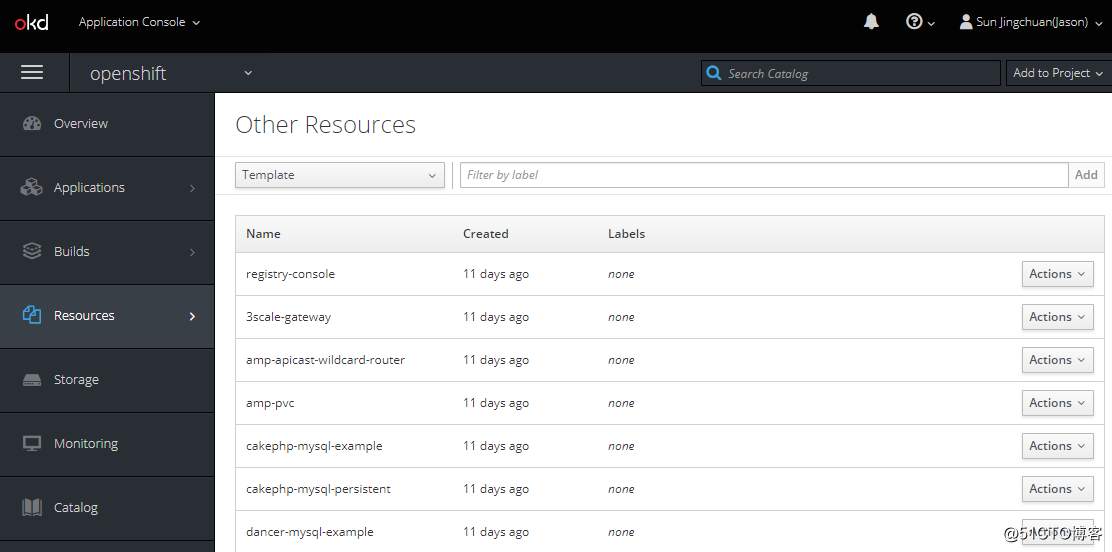
查看Image Stream,点击Builds -> Images: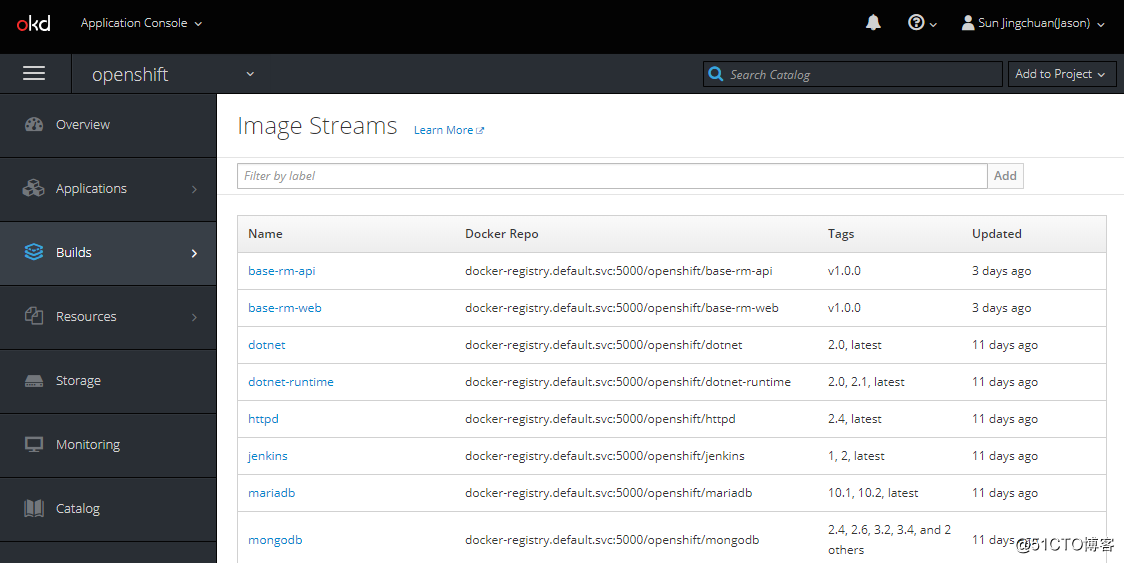
其他部署方式
在Service Catalog中,除从Catalog直接选择Item外,还提供了其他三种方式:
Deploy Image可以直接从image或image stream部署应用: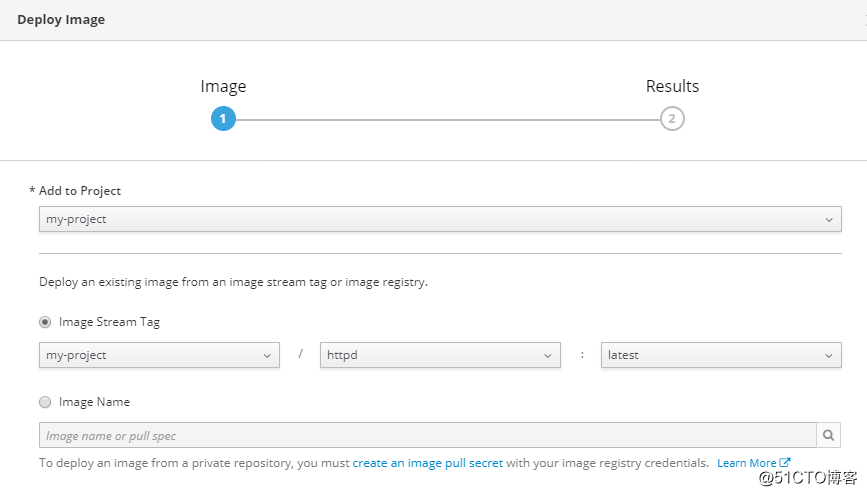
Import YAML / JSON 用来从YAML或JSON创建资源,比如image stream、template: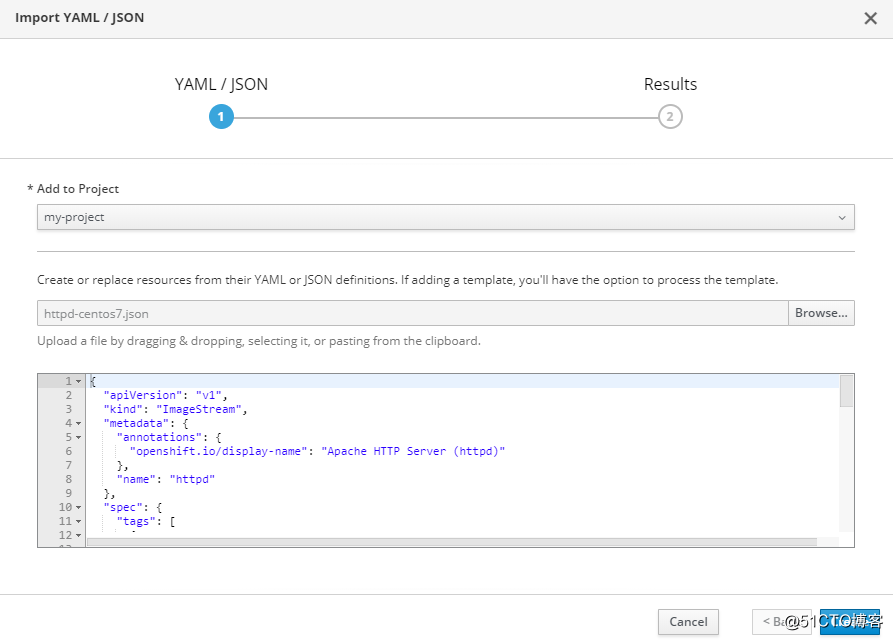
Select from Project 从指定的Project中选择template来部署应用: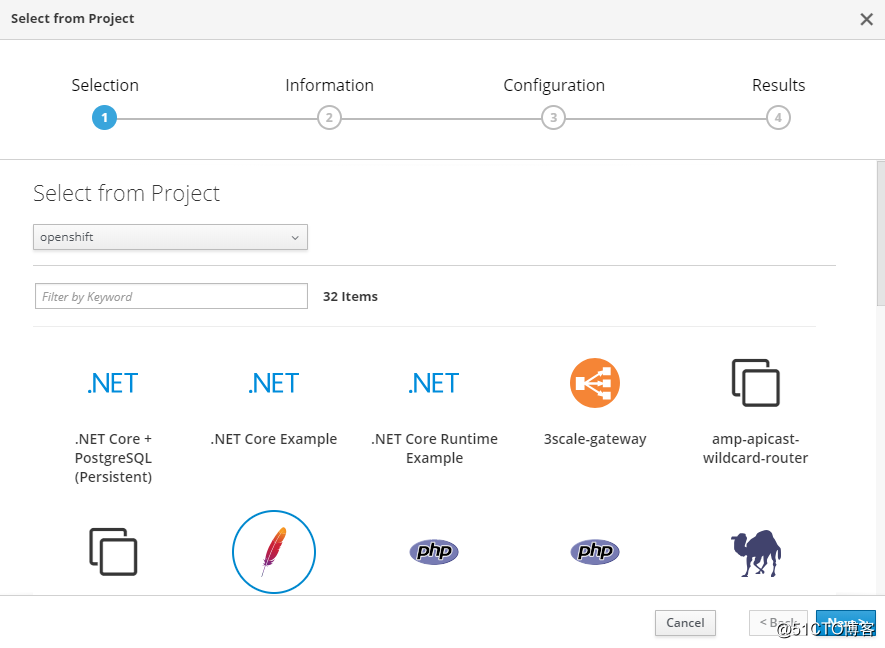
部署Apache HTTP Server
Apache HTTP Server的两种部署方式本质上是相同的,Build策略均为S2I(Source-to-Image),使用S2I构建的Docker镜像来部署应用。Source均使用Apache HTTP Server (httpd) S2I Sample Application,Docker基础镜像(builder image)均使用Apache HTTP Server Container Image。httpd-example template定义了整体部署流程并实现了参数化。
以下是httpd-example template中BuildConfig部分的定义:
- apiVersion: v1
kind: BuildConfig
metadata:
annotations:
description: Defines how to build the application
template.alpha.openshift.io/wait-for-ready: 'true'
name: '${NAME}'
spec:
output:
to:
kind: ImageStreamTag
name: '${NAME}:latest'
source:
contextDir: '${CONTEXT_DIR}'
git:
ref: '${SOURCE_REPOSITORY_REF}'
uri: '${SOURCE_REPOSITORY_URL}'
type: Git
strategy:
sourceStrategy:
from:
kind: ImageStreamTag
name: 'httpd:2.4'
namespace: '${NAMESPACE}'
type: Source
triggers:
- type: ImageChange
- type: ConfigChange
- github:
secret: '${GITHUB_WEBHOOK_SECRET}'
type: GitHub
- generic:
secret: '${GENERIC_WEBHOOK_SECRET}'
type: Generic参数定义及默认值:
parameters:
- description: The name assigned to all of the frontend objects defined in this template.
displayName: Name
name: NAME
required: true
value: httpd-example
- description: The OpenShift Namespace where the ImageStream resides.
displayName: Namespace
name: NAMESPACE
required: true
value: openshift
- description: Maximum amount of memory the container can use.
displayName: Memory Limit
name: MEMORY_LIMIT
required: true
value: 512Mi
- description: The URL of the repository with your application source code.
displayName: Git Repository URL
name: SOURCE_REPOSITORY_URL
required: true
value: 'https://github.com/openshift/httpd-ex.git'
- description: >-
Set this to a branch name, tag or other ref of your repository if you are
not using the default branch.
displayName: Git Reference
name: SOURCE_REPOSITORY_REF
- description: >-
Set this to the relative path to your project if it is not in the root of
your repository.
displayName: Context Directory
name: CONTEXT_DIR
- description: >-
The exposed hostname that will route to the httpd service, if left blank a
value will be defaulted.
displayName: Application Hostname
name: APPLICATION_DOMAIN
...我们先使用builder image方式部署Apache,来了解一下部署的整体流程: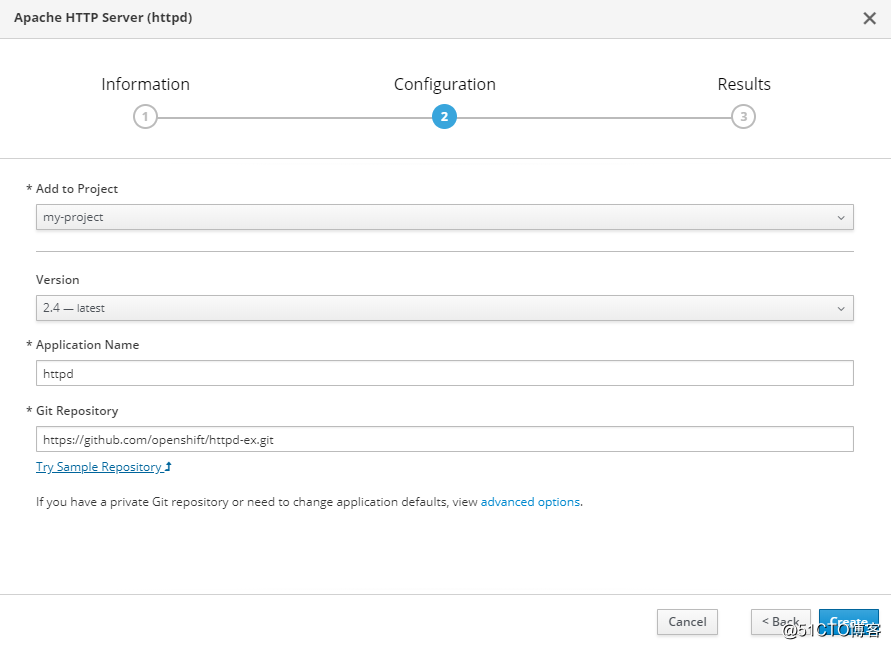
点击"advanced options",可以设置git branch、context、secret,自定义Route、Build Configuration、Deployment Configuration、Resource Limits等。此处填完基本内容后直接点击Create,创建App,然后从成功页面进入Project Overview: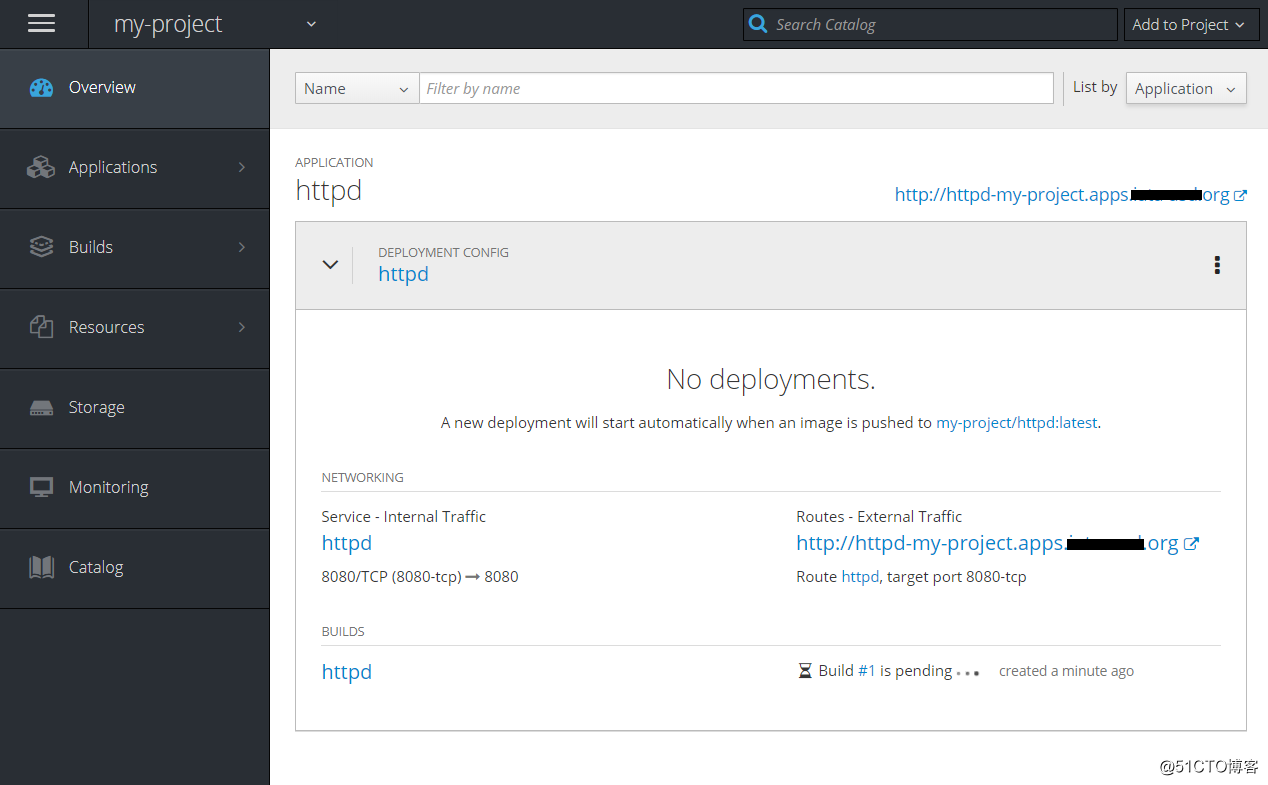
部署过程中自动创建Service、Route、Build、Deployment、Image。进入Application Console的Applications和Builds可以查看详细信息,其中会创建3个pod:httpd-1-build、http-1-deploy、httpd-1-xxxxx,部署完毕后http-1-deploy会自动删除。
部署成功后,测试访问Apache Server(Route定义的Hostname),页面如下: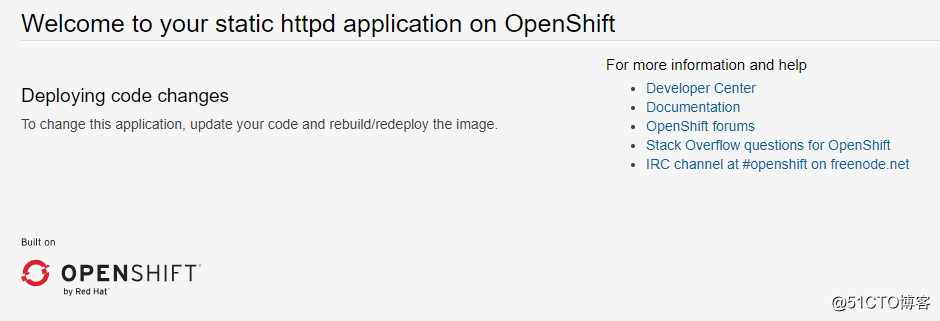
下面解释一下涉及到的基本概念。
基本概念
Service(Kubernetes Service)
内部load balancer,用在OpenShift内部网络中,可使用Service ClusterIP或Hostname访问。
apiVersion: v1
kind: Service
metadata:
annotations:
openshift.io/generated-by: OpenShiftWebConsole
creationTimestamp: '2019-03-26T02:12:50Z'
labels:
app: httpd
name: httpd
namespace: my-project
resourceVersion: '3004428'
selfLink: /api/v1/namespaces/my-project/services/httpd
uid: a81c759f-4f6c-11e9-9a7d-02fa2ffc40e6
spec:
clusterIP: 172.30.225.159
ports:
- name: 8080-tcp
port: 8080
protocol: TCP
targetPort: 8080
selector:
deploymentconfig: httpd
sessionAffinity: None
type: ClusterIP
status:
loadBalancer: {}其中,selector定义了查找container(pod)进行负载均衡的标签。
Route
定义一个hostname来公开Service,以便外部客户可以访问Service,默认hostname为:[app-name]-[project-name].[openshift_master_default_subdomain]。
Build
构建App Image,使用S2I时即从builder image和Source Code来构建App Image。默认builder image和build配置变化时会重新build。
查看Builds -> httpd -> #1 的YAML文本,可以了解Build流程为FetchInputs -> Assemble -> CommitContainer -> PushImage:
...
status:
completionTimestamp: '2019-03-26T02:13:30Z'
config:
kind: BuildConfig
name: httpd
namespace: my-project
duration: 40000000000
output:
to:
imageDigest: 'sha256:5c1f20f20baaa796f4518d11ded13c6fac33e7a377774cfec77aa1e6e6a7cbb2'
outputDockerImageReference: 'docker-registry.default.svc:5000/my-project/httpd:latest'
phase: Complete
stages:
- durationMilliseconds: 3434
name: FetchInputs
startTime: '2019-03-26T02:12:56Z'
steps:
- durationMilliseconds: 3434
name: FetchGitSource
startTime: '2019-03-26T02:12:56Z'
- durationMilliseconds: 2127
name: CommitContainer
startTime: '2019-03-26T02:13:11Z'
steps:
- durationMilliseconds: 2127
name: CommitContainer
startTime: '2019-03-26T02:13:11Z'
- durationMilliseconds: 3426
name: Assemble
startTime: '2019-03-26T02:13:10Z'
steps:
- durationMilliseconds: 3426
name: AssembleBuildScripts
startTime: '2019-03-26T02:13:10Z'
- durationMilliseconds: 16143
name: PushImage
startTime: '2019-03-26T02:13:14Z'
steps:
- durationMilliseconds: 16143
name: PushImage
startTime: '2019-03-26T02:13:14Z'
startTimestamp: '2019-03-26T02:12:50Z'Build Strategy
OpenShift支持Source-to-Image、Docker、Pipeline、Custom四种Build Strategy。
strategy:
sourceStrategy:
from:
kind: "ImageStreamTag"
name: "builder-image:latest"strategy:
dockerStrategy:
from:
kind: "ImageStreamTag"
name: "debian:latest"spec:
source:
git:
uri: "https://github.com/openshift/ruby-hello-world"
strategy:
jenkinsPipelineStrategy:
jenkinsfilePath: some/repo/dir/filenamestrategy:
customStrategy:
from:
kind: "DockerImage"
name: "openshift/sti-image-builder"Deployment
部署App Image,Deployment包含三种对象:DeploymentConfig、ReplicationController、Pod。DeploymentConfig包含部署策略、image配置、环境变量等,ReplicationController包含复制相关信息。App Image和deployment配置变化时会自动重新Deploy。
进入Deployments -> httpd -> #1,编辑Replicas或调节pods数可以增删pod:
Deployment Strategy
修改或升级App,即重新部署应用时的部署方式。部署配置(DeploymentConfig)支持三种策略:Rolling、Recreate、Custom。通过修改Route可以实现蓝/绿部署、A/B部署。
- Rolling 默认策略,当新版本Pod状态变为Ready后才scale down老版本Pod,可能同时存在新老版本的Pod
- Recreate 先终止所有Pod(Scale down the previous deployment to zero)再部署新Pod
- Custom 自定义部署行为
ImageStream
OpenShift管理容器镜像的方式,其中定义了dockerImageReference,ImageStream tag定义了同docker image各版本的映射关系。Build成功后会自动创建ImageStream。
apiVersion: image.openshift.io/v1
kind: ImageStream
metadata:
annotations:
openshift.io/generated-by: OpenShiftWebConsole
creationTimestamp: '2019-03-26T02:12:50Z'
generation: 1
labels:
app: httpd
name: httpd
namespace: my-project
resourceVersion: '3004571'
selfLink: /apis/image.openshift.io/v1/namespaces/my-project/imagestreams/httpd
uid: a81b14bf-4f6c-11e9-9a7d-02fa2ffc40e6
spec:
lookupPolicy:
local: false
status:
dockerImageRepository: 'docker-registry.default.svc:5000/my-project/httpd'
tags:
- items:
- created: '2019-03-26T02:13:30Z'
dockerImageReference: >-
docker-registry.default.svc:5000/my-project/httpd@sha256:5c1f20f20baaa796f4518d11ded13c6fac33e7a377774cfec77aa1e6e6a7cbb2
generation: 1
image: >-
sha256:5c1f20f20baaa796f4518d11ded13c6fac33e7a377774cfec77aa1e6e6a7cbb2
tag: latestTemplate
定义整体部署流程并实现参数化,包含Service、Route、ImageStream、BuildConfig、DeploymentConfig、parameters等部分。
了解了以上基本概念就很容易理解httpd-example template了,您可以自己部署测试,此处不再赘述。
OC Tool
使用oc new-app部署应用
继续之前,先将以前创建的测试project删除或新建一个project。
$ oc delete project my-project
$ oc new-project my-project在Service Catalog一节我们提到了部署应用的三种方式:template、builder image(image+source)、image,对应的命令如下:
$ oc new-app httpd-example -p APPLICATION_DOMAIN=httpd-example.apps.itrunner.org
$ oc new-app openshift/httpd:2.4~https://github.com/openshift/httpd-ex.git --name=httpd-ex
$ oc new-app my-project/httpd-ex --name=httpd说明:
- image+source的语法为[image]~[source]
- 第三种方式使用的image为第二种方式中生成的
- 后面两种方式不会自动创建Route,需要手工创建:
$ oc expose service httpd-ex --name httpd-ex --hostname=httpd-ex.apps.itrunner.org
$ oc expose service httpd --name httpd --hostname=httpd.apps.itrunner.org从JSON/YAML创建资源:
$ oc create -f <filename> -n <project>使用oc命令还可以直接从source code创建应用,可以使用本地或远程source code:
$ oc new-app /path/to/source/code
$ oc new-app https://github.com/sclorg/cakephp-ex可以指定子目录:
$ oc new-app https://github.com/sclorg/s2i-ruby-container.git --context-dir=2.0/test/puma-test-app可以指定branch:
$ oc new-app https://github.com/openshift/ruby-hello-world.git#beta4OpenShift自动检测代码根目录或指定目录,如果存在Dockerfile则使用Docker build策略,如果存在Jenkinsfile则使用Pipeline build策略,否则使用Source build策略(S2I)。
下面的例子使用了Source build策略:
$ oc new-app https://github.com/sclorg/cakephp-ex使用Source build策略时,new-app通过检测根目录或指定目录的文件来确定language builder:
| Language | Files |
|---|---|
| jee | pom.xml |
| nodejs | app.json, package .json |
| perl | cpanfile, index.pl |
| php | composer.json, index.php |
| python | requirements.txt, setup.py |
| ruby | Gemfile, Rakefile, config.ru |








 本文详述了如何在OpenShift平台上使用Service Catalog、OC Tool、S2I和Pipeline部署应用,涵盖Apache HTTP Server、Spring Boot和Angular的示例。内容包括基本概念、部署流程、Image管理和Pipeline构建,旨在帮助读者理解和实践OpenShift应用部署。
本文详述了如何在OpenShift平台上使用Service Catalog、OC Tool、S2I和Pipeline部署应用,涵盖Apache HTTP Server、Spring Boot和Angular的示例。内容包括基本概念、部署流程、Image管理和Pipeline构建,旨在帮助读者理解和实践OpenShift应用部署。
 最低0.47元/天 解锁文章
最低0.47元/天 解锁文章
















 1068
1068

 被折叠的 条评论
为什么被折叠?
被折叠的 条评论
为什么被折叠?








